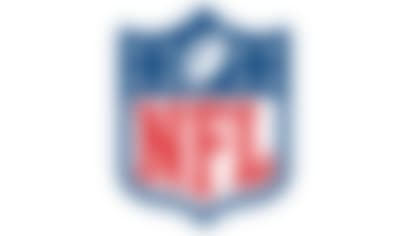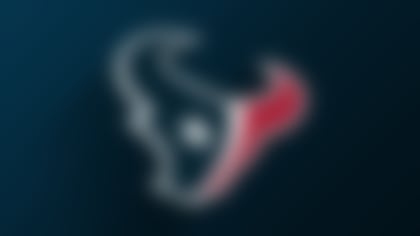*This weekend, the Pro Football Hall of Fame will enshrine the Class of 2017 in Canton, Ohio. Who should earn this honor next year? What about in 2022? Elliot Harrison looks ahead and shares who he would put on his ballot for the next five classes of Hall of Famers. *
Putting Dawkins first on my faux ballot is intentional -- he's the most deserving. Dawkins has already waited one year. Given that he is a safety, a position to which the voters have demonstrated a decades-long aversion, he might have to sit next to the phone a bit longer in reality. But that's bunk. All of it, man. Forget that Dawkins was a four-time first-team All-Pro, the best player at his position in the early 2000s, or on the All-Decade Team for the 2000s, and remember what he wasn't: a distraction. (Take a look at the following names on this ballot for the relevance of that statement.) Remarkably, Dawkins isn't considered a shoo-in for the Hall despite compiling 91 impact plays over his career (37 interceptions, 28 forced fumbles and 26 sacks).
Unlike his contemporary Dawkins (both came into the league in 1996), Lewis won't have to wait. Lewis remains a lock for the Hall of Fame, as he was oft-mentioned in that regard while still playing. He is part of an exclusive fraternity of players who have won multiple DPOY awards since the honor became official in 1971, a who's who of legends: "Mean" Joe Greene, Lawrence Taylor, Mike Singletary, Reggie White, Bruce Smith and J.J. Watt. All but the still-active Watt are first-ballot enshrinees in Canton. Lewis is one of only two guys to be named the league's top defensive player and Super Bowl MVP during the same season (Harvey Martin, who was named co-MVP of Super Bowl XII after being the DPOY of 1977). Named to the All-Decade Team of the 2000s, Lewis performed at a high level for well over 10 years with the Ravens.
As a member of the Steelers from 1998 to 2007, Faneca had to get out in space and block Lewis a time or 200. Along with Steve Hutchinson, Faneca was the best player at his position in the early 2000s, making first-team All-Pro six times. When you talk about putting a guard in the Hall of Fame, you must mention the credentials, although sometimes that rings hollow. People get tired of hearing about Pro Bowls and the like. Thus, here are two items that more than support Faneca's enshrinement. Dermontti Dawson, a Hall of Fame center for the Steelers, told me that he could tell Faneca was special during Faneca's first training camp. Also, in supporting Faneca's candidacy earlier this year, I pulled a random play in a random game from 2003 to share with the masses. Take a look:
OK, now that you've watched, I think it's safe to say this guy was pretty good.
You know the numbers, or at least the general altitude at which Owens' statistics reside -- as in, right underneath the Jerry Rice stratosphere. Owens is second all-time in receiving yards with 15,934 and third in receiving touchdowns with 153 (three behind Randy Moss). Owens' line doesn't reflect merely chunk plays and scores, either; he ran a complete enough route tree over the course of his career to still rank eighth in catches with 1,078, too. None of the players ahead of him in receptions -- save for Rice -- comes close to Owens in touchdowns, revealing the difference between the chain-movers and a wideout who could impact the game by himself. Unfortunately, T.O. also impacted teams by himself in the opposite way, causing enough distractions to force at leastthree teamsto say goodbye. That's what has kept him out of the Hall to this point. What those voters should also consider is Owens' effort to back up his bravado, be it by catching a ball in traffic or making a block on the back side of a running play that broke for big yards. Owens was unstoppable for a really large chunk of his career, something so many Hall of Famers can't match.
Moss was as uncoverable as Owens, with a dash of scare-the-crap-out-of-defensive-coordinators on the side. I'm not sure any wideout before or since Moss -- and yes, that includes Megatron -- has been feared as much. Moss scored twice in his first game as a pro, then added a bundle more to set a rookie record with 17. He tallied 90 -- 90! -- during his first seven years in the league. Consider that Don Maynard, Andre Reed, Lance Alworth, Paul Warfield, Art Monk and Michael Irvin are part of a large group of Hall of Fame wide receivers who didn't have that many over their entire careers. Moss is third in receiving yards, behind only Rice and Owens, with 15,292. So why do some voters and analysts I've spoken with think Moss will wait? Being a distraction to his team, a la T.O., albeit in a different fashion. Moss' biggest infraction was a perceived lack of effort -- taking a few plays off. The issue here, and why I would vote Moss in, is that even if he was loafing a few plays per game, DC's constantly had to account for him. You might not like that reasoning, but consider how much making every defensive back nervous (seeing as how they didn't know when he was going to burn rubber or tread water) opened up opportunities for his teammates. The scariest receiver this side of Bob Hayes should join Hayes in the Hall without having to wait 30 years (like Hayes).
Seniors
Next year's class will allot for two senior nominees, so in the interest of pushing through a backlog of deserving players, I have selected two who I think will get in eventually. While Chuck Howley has not been a hot name with the voters, I feel the five-time first-team All-Pro is deserving. Howley picked off 25 passes, plus four more in the postseason, and played until he was 37 years old. He's the only player to be named Super Bowl MVP from a losing team, earning that honor in Super Bowl V. Howley followed up that season by making the Pro Bowl at 35 en route to helping the Cowboys win their first Super Bowl.
Johnny Robinson was a contemporary of Howley's whose career also started in Dallas -- albeit for the Texans. Robinson and his teammates moved to Kansas City to become the Chiefs in 1963, a year that kicked off eight straight All Star/Pro Bowl appearances for the rangy safety. In fact, he and Hall of Famer Larry Wilson were the first-team All-Pro safeties the year the AFL and NFL merged. Robinson also owns the rare distinction of leading two leagues in interceptions, having paced the AFL with 10 in 1966 and the NFL with 10 again in 1970. Robinson was the best defensive back in the history of the American Football League, so this mention is really freaking overdue.
Contributor
Pat Bowlen should reside in the Hall of Fame sooner than later, given that he was a strong candidate in this category in 2017. His work on the television committee and the turnaround of the Broncos franchise from decent outfit to five-time Super Bowl participant in his first 14 years of ownership cannot be overlooked. Bowlen hired John Elway as GM, which ultimately led to a third Lombardi Trophy for one of the league's more successful franchises. There was a time that no one would've written that last sentence, but it was before Bowlen bought the team. Given his decline in health in recent years, I hope 2018 sees Bowlen receive the ultimate football honor.
Follow Elliot Harrison on Twitter @HarrisonNFL.




